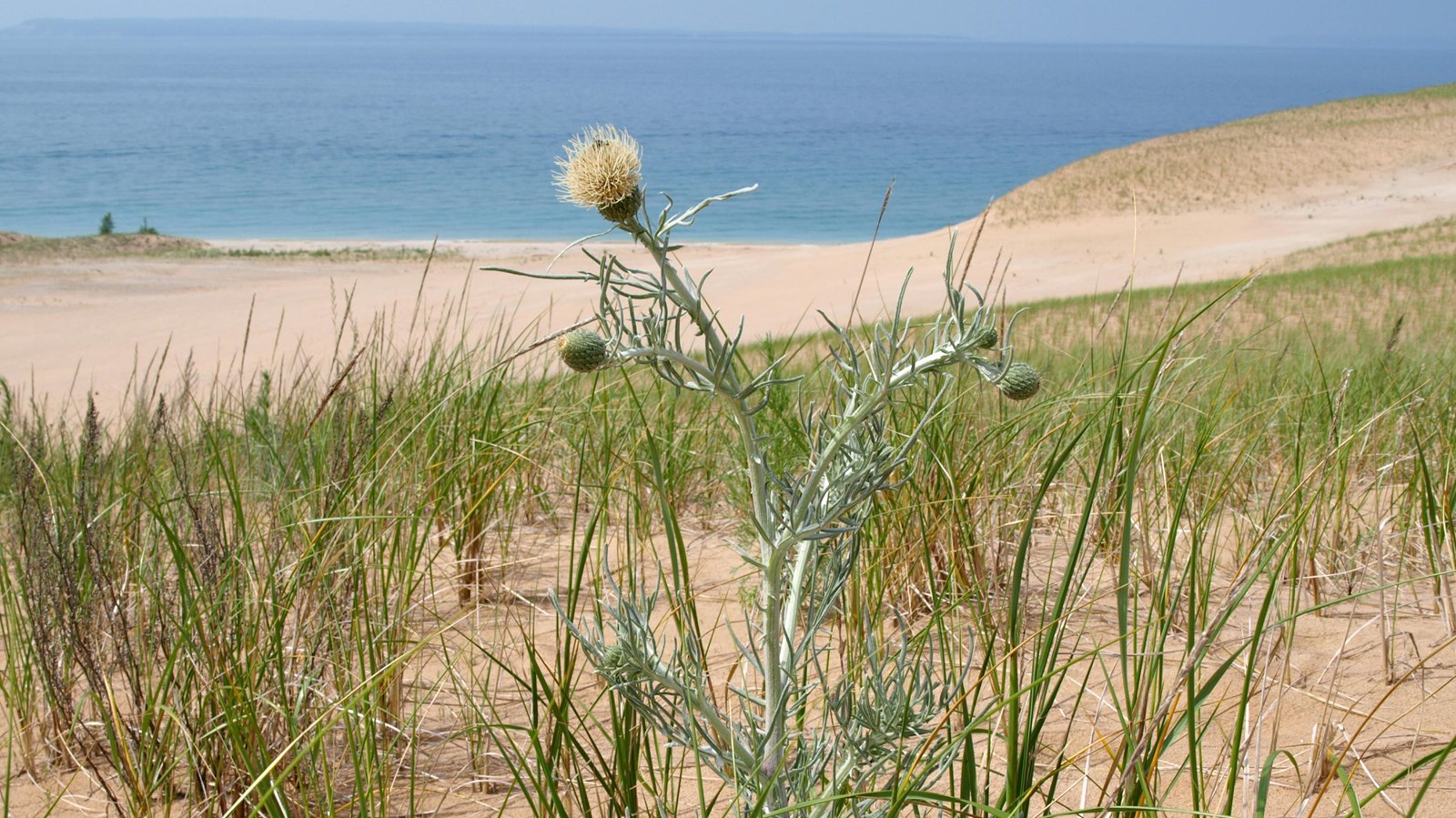Last updated: September 25, 2025
Place
Sleeping Bear Point Trail

NPS credit
Toilet - Vault/Composting, Trailhead
Pets:
This trail is closed to pets April 15-August 15 due to the nesting of endangered piping plovers.
Visit the Pets in the Park page for pet-friendly locations in the Lakeshore.
Distance
Loop of 2.8 miles with a spur to Lake MI about 0.5 miles from the trailhead
Terrain
Rolling dunes
Vegetation
Dune grasses, shrubs, and wildflowers
Comments
If you can only do one hike in Sleeping Bear Dunes, this is the one! Sleeping Bear Point offers a little bit of everything: woods, dunes, water; shaded and more exposed areas; and beauty, beauty, beauty. While trekking the 2.8-mile loop through the sand of the Sleeping Bear Dune plateau is work, it is not nearly as long or strenuous for young children as the Dune trail from the Dune Climb. Take a dip in the cooling waters of Lake Michigan after your hike and add a visit to the Maritime Museum, and you have a great family afternoon in the park.
Spectacular in every season, with easy-to-follow blue-tipped trail markers, the trail rewards hikers with fantastic views of the dunes, Lake Michigan (Sleeping Bear Bay up to Pyramid Point on the right (east and north) and Platte Bay on the left (south) and across the Manitou Passage to North and South Manitou Islands. Give yourself plenty of time to stop and gaze.
The trail then cuts inland onto the dune plateau and through a ghost forest. Winds, weather, logging, and other disruptions have resulted in some dune "blowouts" resulting in the parabolic shapes in the dunes. The trail continues to move inland and eventually leaves the dunes all together and then cuts into a beautiful lush green forest.
Don't underestimate this short hike. Walking in sand can be strenuous and in the middle of the summer, sunglasses, a wide-brimmed hat, suntan lotion, and a quart of water are needed to survive the desert-like heat that radiates off the dunes. Drinking water is available just down the road at either the Maritime Museum, the Cannery parking lot, or the modern restrooms and drinking fountain in Glen Haven.
While about 75% of hikers hike the trail loop counterclockwise, many say going clockwise is a somewhat less strenuous path-and saves the views for last!
About 1/3 mile (.5 km) from the trailhead, going counterclockwise, there is a half mile (0.8 km) spur trail which goes to Lake Michigan.
What is a ghost forest?
The sand that makes up the landscape of the Sleeping Bear plateau is constantly moving. You may not notice this phenomenon one day to the next, but year after year the tiny quartz grains shift little by little. Constant winds blowing off of Lake Michigan cause the dunes to migrate and expand, and for new dunes to grow.Â
Over time, the drifting and accumulating sand engulfs whatever is in its path, including trees. When migrating sand moves into a wooded area, it gradually buries and kills the trees. As the years pass and the sand continues on its journey, the trees are eventually uncovered. Those that remain standing appear as ghosts-dead, white, and stripped of their branches.
Take the Trail Trekker Challenge
Do you think you can hike all of the trails in one year? Want to explore the landscape of Sleeping Bear Dunes National Lakeshore, exercise, and have fun all at the same time? Join the Trail Trekker Challenge! Earn a prize and bragging rights by successfully completing each of the 13 mainland trails in the National Lakeshore. Hiking is a great way to get daily physical exercise and promote health while also discovering the beauty of the area. What better way to get your muscles warm, your heart pumping, and your senses savoring the views!
Pick up a copy of the Trail Trekker Challenge brochure/logbook at the visitor center in Empire.
Are you prepared to hike in the Lakeshore? Follow these safety tips.
